While the major computer operating systems are multiuser, multitasking systems with virtual memory, you might be longing for the days where one user had full reign over a PC.
If you miss the days of the 640K barrier and figuring out which drivers to load into high memory, FreeDOS might be for you. This open-source reimplementation of MS-DOS does have some serious uses.
What Is FreeDOS?
As the name suggests, FreeDOS is an implementation of Microsoft's MS-DOS that's open source. It aims for a high degree of compatibility with classic DOS hardware and software while adding some more features like extensive online documentation.
As it's designed as a replacement for DOS, it currently only runs on Intel chips. The project recommends a 386 chip or better, at least two megabytes of RAM, and at least 40MB of hard drive space. Most modern PCs should exceed these requirements, to say the least.
FreeDOS has built-in networking available, so you can even take it online. Don't think you're just limited to text-based programs, either. FreeDOS has desktop options like OpenGEM and oZone available.
A Brief History of FreeDOS
Jim Hall started the FreeDOS project when he was a student at the University of Wisconsin-River Falls in 1994. Windows 94 was on the horizon and it was clear that Microsoft would be investing in that platform rather than MS-DOS.
"DOS appears to be a popular system, and there is plenty of hardware already available that is ready to support it," Hall wrote in 1998. "Microsoft will not develop DOS forever, and one cannot count on commercial programming firms such as IBM or Digital to continue DOS. I feel it is then up to those on the Internet to develop their own DOS (hereafter, Free-DOS) and I feel there is a lot of support for this type of project."
That same year, the first release of the system came out. While the project isn't as high-profile as other open-source operating systems, FreeDOS does have certain visibility. When Dell first offered computers with open-source operating systems, for some reason they chose to pre-install FreeDOS on computers rather than more comprehensive systems like Ubuntu.
What Can You Do With FreeDOS?
While you can download a free, open-source implementation of DOS, why should you bother when you're already using a protected mode, multitasking OS with virtual memory on your machine already?
There are several reasons.
Updating the BIOS
While more computer manufacturers are providing tools to automate the updating of the PC BIOS, there are times when you may need to update or reflash it manually. Many motherboards will only boot MS-DOS or similar systems.
You can do this by downloading the BIOS file and copying it to a USB stick or other bootable media with FreeDOS installed. Then boot up the machine with the stick inserted and run the command to install the new BIOS. This will vary depending on the computer or motherboard manufacturer.
Playing Old DOS Games
While it's possible to download DOS games and play them in an emulator like DOSBox, if you still have old PC hardware, it can be especially fun to play games on a beige box straight out of the '90s. FreeDOS comes with the drivers to support sound cards, video cards, and mice. If you just want to play games and you don't have any vintage PC hardware, DOSBox is a good alternative.
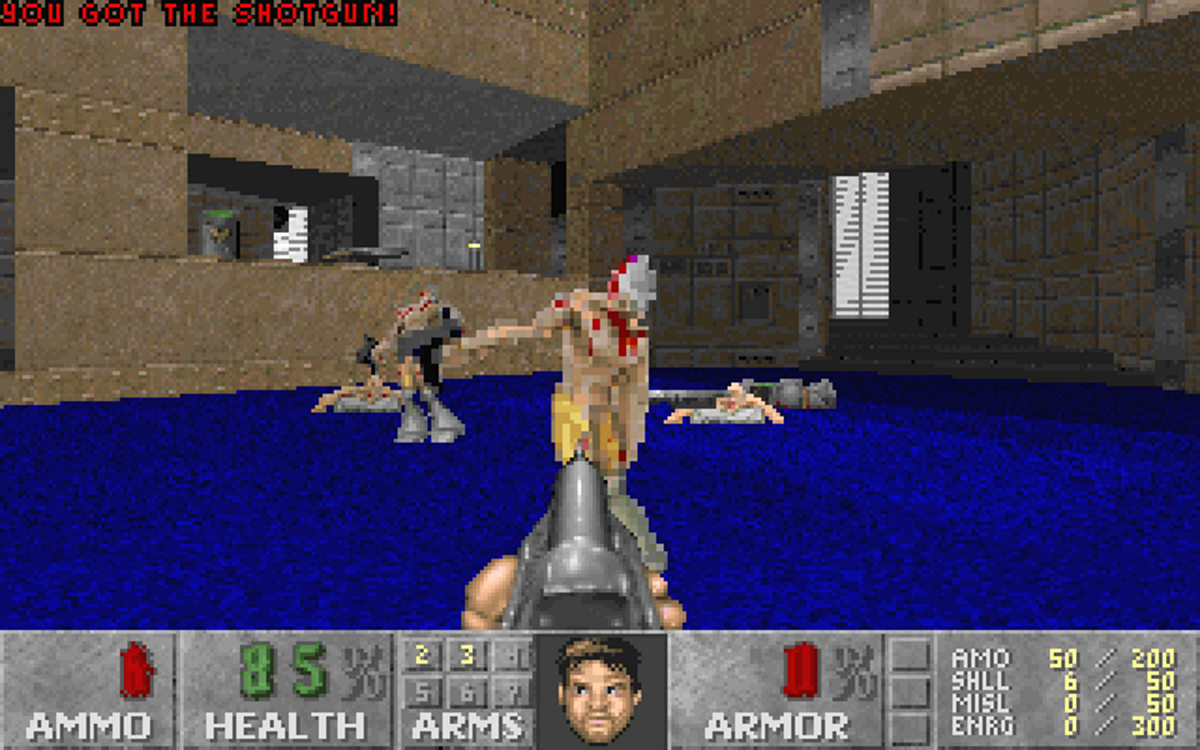
FreeDOS even comes with some games on the installation CD image, including the free Doom clone Boom pictured above. The system will install these games in the C:\GAMES directory through the package manager if you choose to install them. If you have any floppies or CDs with DOS games, you can install and run them from a hard drive as you did back in the day, or on a virtual machine.
Using DOS Legacy Applications
FreeDOS has another major practical application: accessing files from legacy DOS applications. Perhaps you need financial records from an old Lotus 1-2-3 or VisiCalc spreadsheet from the '80s.
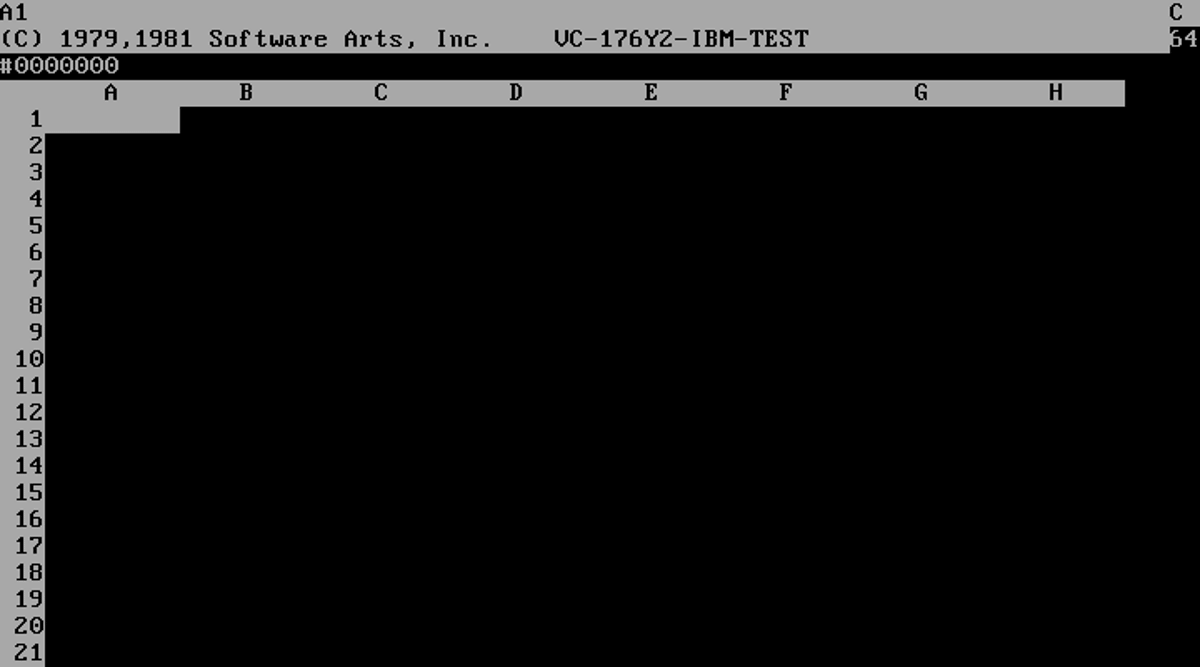
You'd just have to attach a floppy disk drive to the computer and boot up FreeDOS or transfer the disk to a virtual machine. You can use a copy of the program to retrieve the file and export the data into a format usable on modern computers.
Exploring the System
While Linux is also free and open-source, it's also very complex. If you ever look at the source code of the kernel alone, it can be very difficult to understand, even for people with experience in C and systems programming.
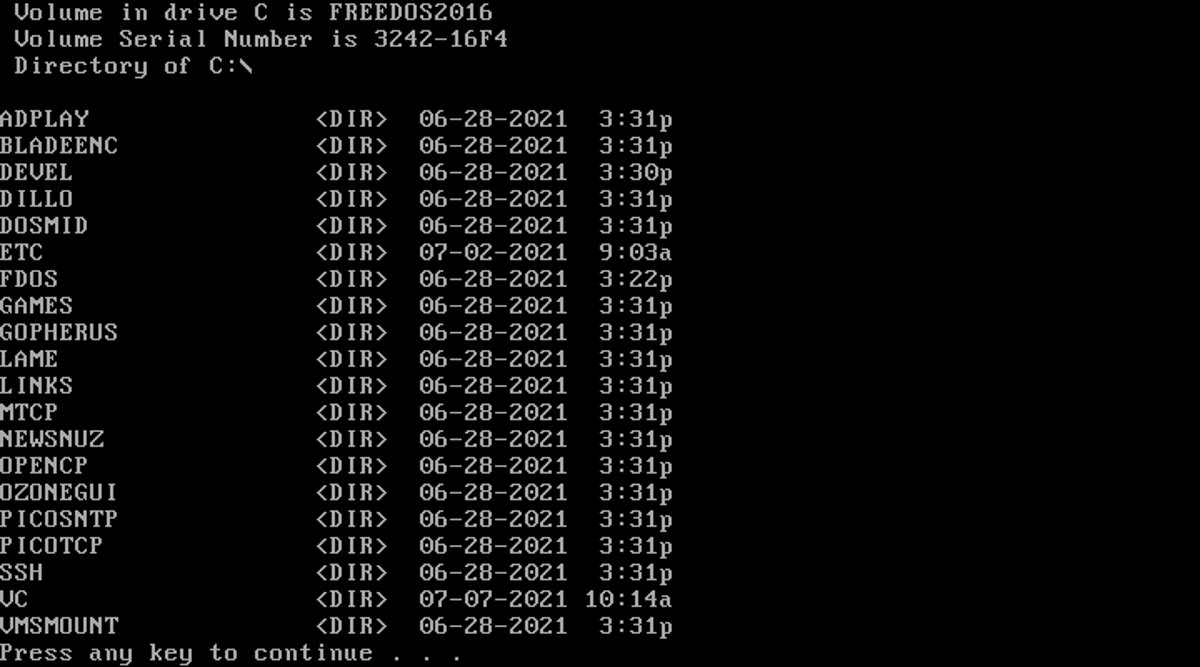
DOS, being single-tasking and single-user, is much simpler. If you're looking to study operating systems in detail, FreeDOS makes a good starting point for these reasons.
Embedded systems typically have more constrained processors and memory. Simple systems like MS-DOS have been widely used in this area. While a lot of embedded developers are moving to more full-featured systems like Linux on Raspberry Pi, there is still a lot of development happening in this space. FreeDOS has the advantage over MS-DOS of being open source and actively developed.
How to Install FreeDOS
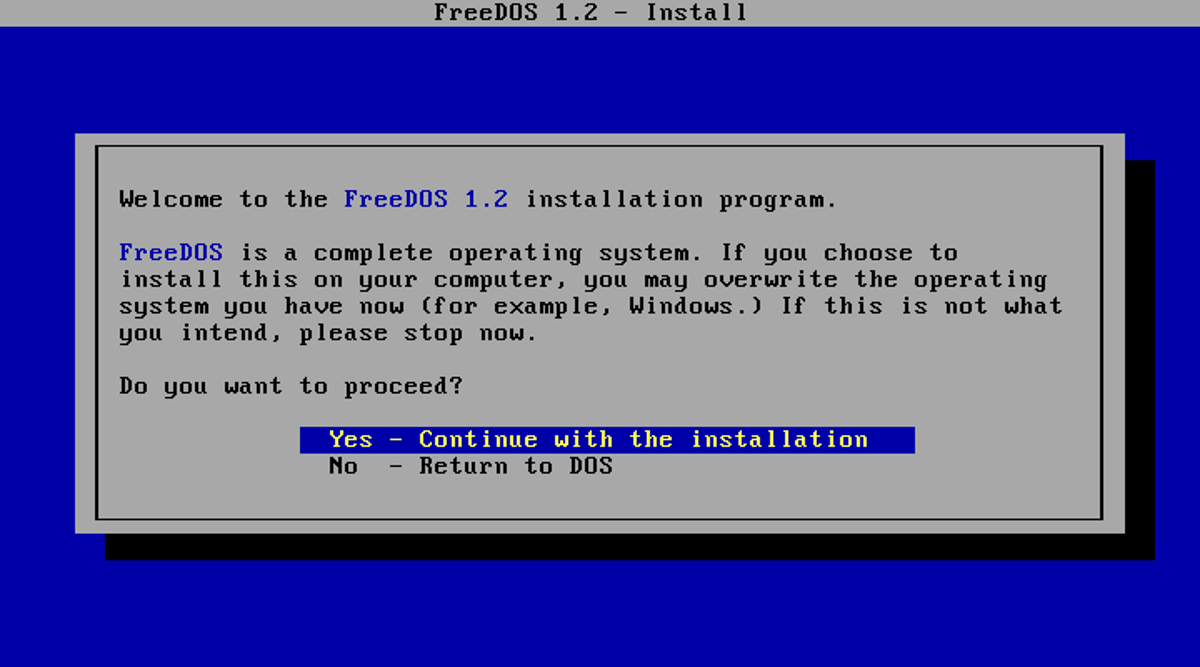
Installing FreeDOS is similar to installing other operating systems. You just download the ISO file, extract it to a suitable media, boot the system, and run the installation program.
Download: FreeDOS
You might want to try installing and running FreeDOS in a virtual machine like VirtualBox before committing to actual hardware. If you get an "invalid opcode" error message when trying to install FreeDOS in VirtualBox, don't panic. There's a small workaround. In the menu, Install to hard disk should be selected automatically. Hit Tab and then add "raw" to the command line.
Actually installing is straightforward. It's a matter of following the prompts and rebooting into the newly installed system.
The default boot menu option loads a memory manager that frees up memory by loading drivers in areas beyond the initial 640K on the original PC. That's why you should use it unless you have problems booting. The boot menu offers a "safe mode" of sorts that doesn't load any memory management utilities and runs in "real mode."
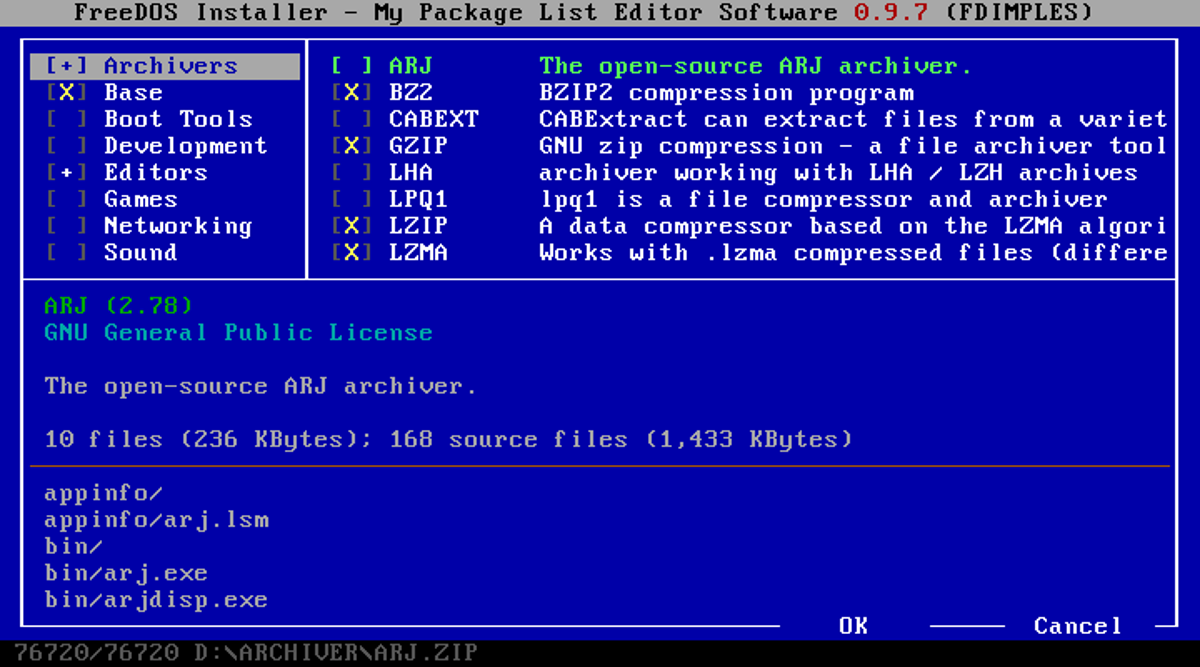
After that, you can install packages from the installation CD using the FDIMPLES command, including networking applications. You'll have to have the CD inserted to be able to install new packages.
Going Online on FreeDOS
While networking was hardly unknown on DOS systems, it was mainly reserved for PCs in large businesses connecting to a LAN using Novell's NetWare. FreeDOS includes TCP/IP networking instead of Novell's proprietary IPX.
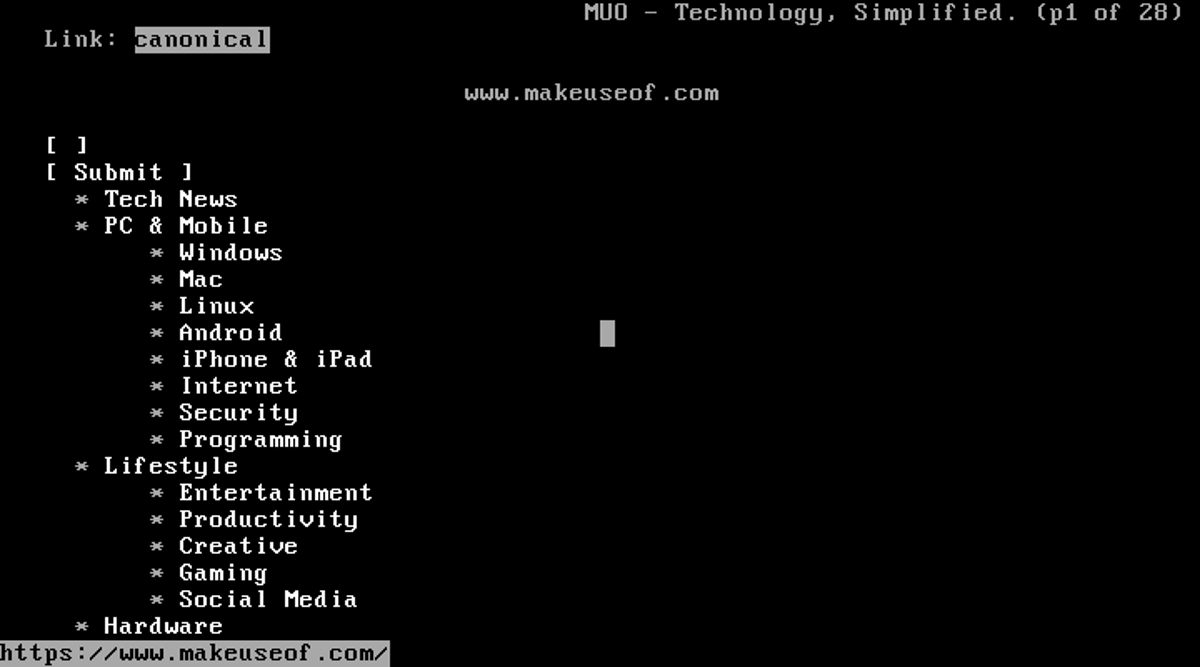
You can go online with the text-based Links browser or the graphical Dillo. You can also transfer files to and from a virtual machine using a built-in FTP server, though you can also mount a VHD drive on your local machine. You can install all of these from FDIMPLES under the networking section.
FreeDOS Is an Interesting and Fun Non-Linux Open-Source OS
FreeDOS brings back a lot of the fun and some of the annoyances of MS-DOS. Should you use it? An ordinary user might not have much use for a single-user, single-tasking operating system, but enthusiasts, especially those whose first computing experiences were in DOS, might find FreeDOS an exercise in nostalgia. It's worth taking for a spin in a virtual machine. It might make you appreciate modern systems better.
If you're interested in other open-source operating systems that aren't Linux and you have a Raspberry Pi, there are options, though many of these will also run on ordinary PCs as FreeDOS does.
0 Comments